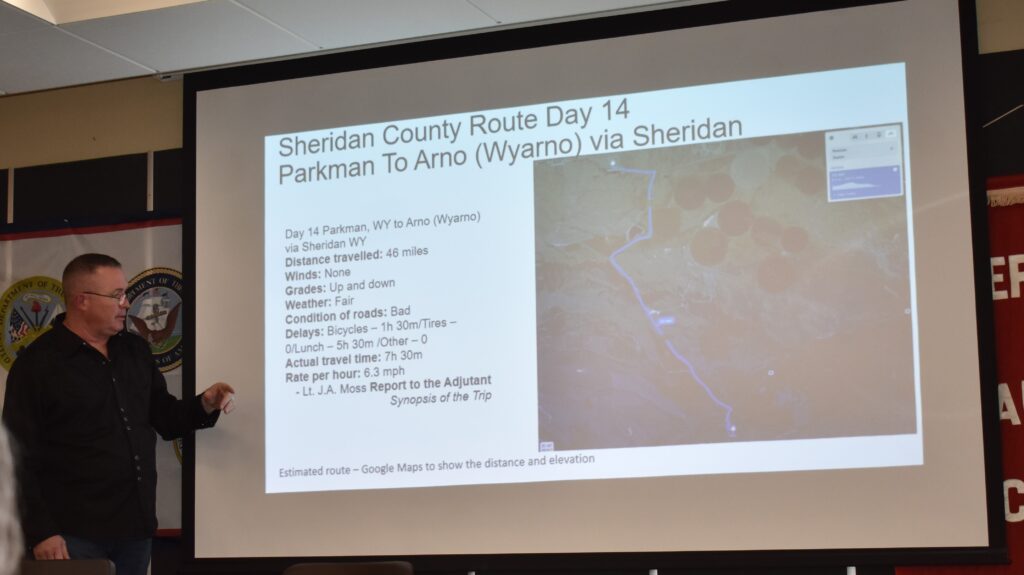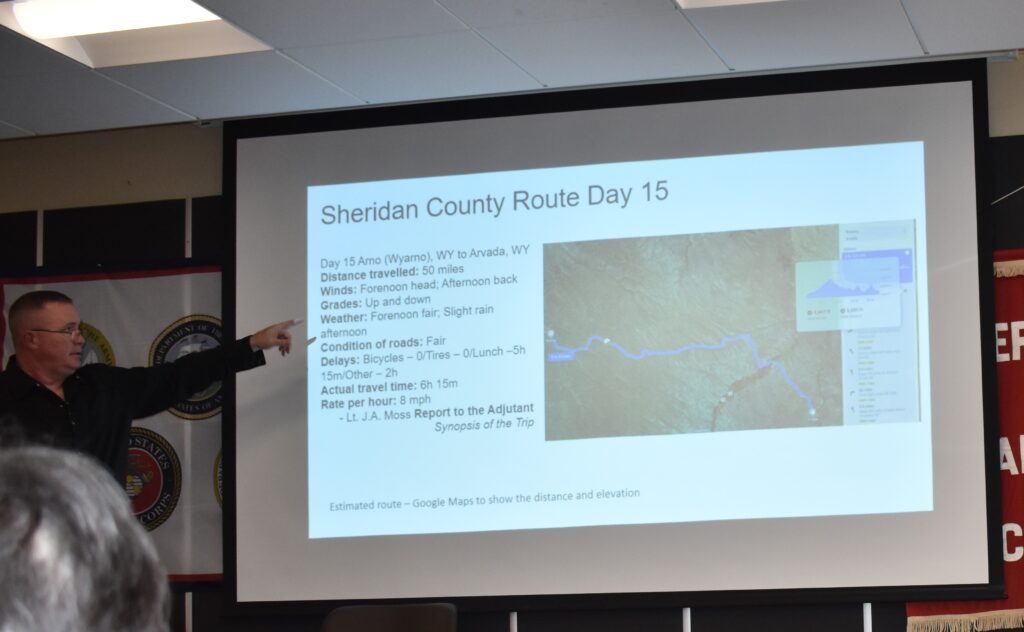News
SCLT Presents Iron Riders Program

Iron Riders: 1896-1897 Bicycle Experiment program by Todd Wold, SCLT Board Member, was held on May 9 at the Hub on Smith. Wold said his undergrad degree was in history, and he served 30 years as an attorney in the US Air Force.
In 2005 Wold and his wife decided to move to Sheridan, saying the liked the small town feel. He added that he and Carrie Edinger worked on this program before Edinger moved on to her new position at the Brinton Museum.
While researching the unmarked graves at the Monarch cementary, Wold came upon information about the Iron Riders, and discovered that they are a part of Sheridan County’s history.
The soldiers of the 25th Infantry, a black unit or ‘buffalo Soldiers’ from Fort Missoula, Montana were chosen for the experiment.
He said the documentation of the ride came from dispatches from Edward “Eddie” Hugo Boos, reporter for the Missoulian paper, who accompanied the soldiers on the ride, as well as reports from their commander, Lt. James Alfred Moss. He was stationed at Fort Missoula to command the black regiment there.
Bicycles were considered for military usage because, unlike horses, a bike didn’t have to fed and it was smaller and quieter than a horse. Until the bike came along, people either rode horseback, walked, rode in wagons or on a train.
A train was faster but didn’t go everywhere. Same with a wagon. Bikes could move men and weapons faster than they could walk. European countries had been looking at bicycles for military as well. However, European countries had more roads, and the country is usually not as rough and rugged than the route from Montana to Missouri.
Bikes were made by the Spauling company. One thing that Wold pointed out about the bikes that they rode were heavy bikes, no aluminum or carbon fiber. He also pointed out the anatomical correct design of the bicycle seat. There was a small pad for the buttocks, and an iron tongue in front of the seat.

“You would have to be an ‘iron rider’ to ride this,” Wold said.
For the trek, the bikes were fitted with a knapsack on handlebars, blanket roll, haversack. They also had two sets of clothes, toilet paper, and a toothbrush. A canteen, rifle and cartridge belt with 30 rounds of ammo, either strapped to bicycle or slung over the soldiers chest. Every other soldier in the line strapped the rifle to the bike.
The reason some carried the rifle was because this was a military experience, and the soldier had to be ready to fight if necessary. Having it on their body allowed them to react quicker.
The Yellowstone trip proved the worth of the concept, and then it was time to undertake the longer journey, from Montana to Missoula. Spaulding was interested in the concept, so they provided the bicycles for the trek.

The 1897 expedition was a 41-day journey from Missoula, Montana to St. Louis, Missouri. They could re-stock their supplies at forts, towns and depots along the route. In Montana, the soldiers were forced to wade through the Little Big Horn River multiple times, carrying their bikes. There were not many roads, so they often traveled along the railroads.

The Iron Riders passed through Parkman, then on to Ranchester, Sheridan, Wyarno, which was called Arno, where they spent the night. From there they traveled on to Arvada before crossing into South Dakota and then into Nebraska, where in some places the sand was so deep that the riders were forced to dismount and push their bicycles, and then on to Missouri.
After the experiment, the 25th continued to fight in America’s wars, including in Cuba and in the Philippines.
Although the bicycles proved their worth, they were not used much by the US Army, mostly due to the fact that not to many years later mechanized vehicles came into use for the military. Still, bicycle corps continued to be used in Europe even during the WWI.
Still Lt. Moss said that the 1900-mile bicycle trek was one of the greatest marches known of in military history. And it went through Northern Wyoming and Sheridan in 1897.

